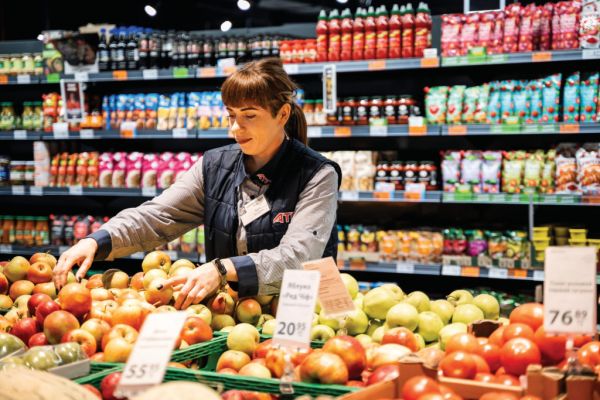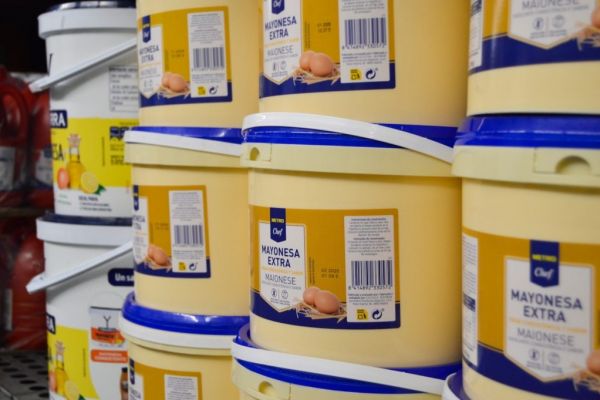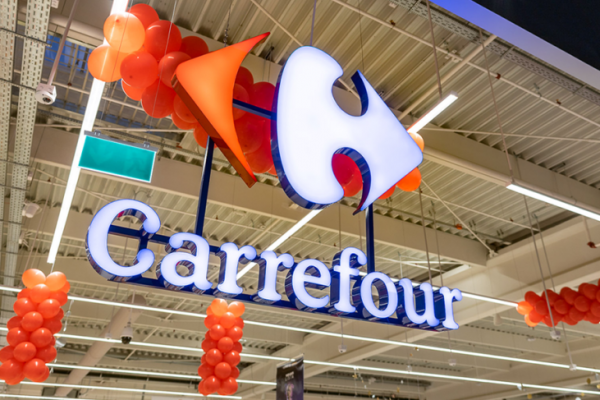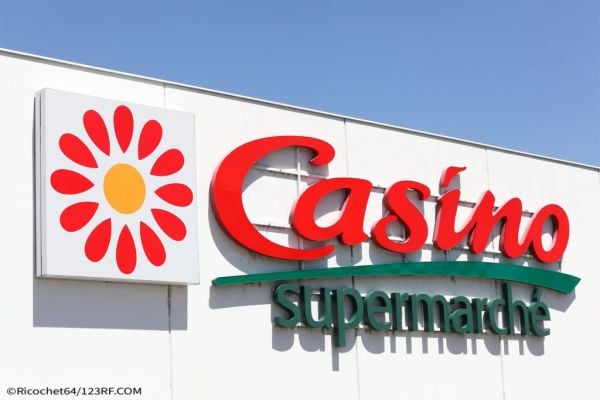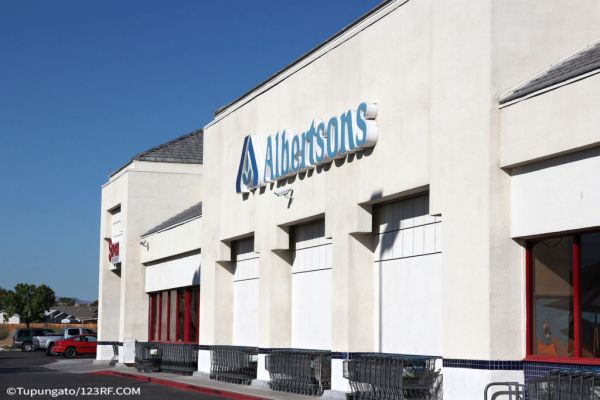Nina Mishchenko examines five key challenges faced by Ukrainian retailers in their supply chains during the ongoing war. This article first appeared in ESM's May/June 2023 edition.
The morning of 24 February 2022 saw the cognitive director of Fozzy Group, Dmytro Tsygankov, at his home in Irpin – 25 kilometres from Kyiv – as Russian troops were advancing towards the capital, making it dangerous to travel to the office.
Instead, Dmytro and his wife decided to go to the nearest Silpo supermarket, operated by Fozzy Group, to support their colleagues. This supermarket was designed in 2020 and features a board game theme.
Dmytro became the warehouse manager, while his wife worked at the checkout. However, eight days after the start of the war, the store had not received any supplies, so they decided to take everything they had in the warehouse and put it on the shelves, selling everything quickly. They did not have time to change the price tags or reprice the goods, due to the urgency of the situation.
To meet the sudden surge in demand, former employees who had been laid off in the previous year – and some even three years before – came to help, volunteering to ensure that the store could remain open. Despite the challenging circumstances, logistics managed to bring a truck with grains, pasta, sugar, flour, and other goods to the store on 4 March. This delivery helped many residents of Irpin survive the occupation, as enemy tanks entered the city the very next day.
The supermarket was not destroyed, but the windows were smashed and the ATMs stolen after the city was occupied. Dmytro managed to leave the city, but the store manager, along with his wife and disabled child, hid in the supermarket basement and miraculously survived until the Ukrainian army liberated Irpin at the end of March.
Other employees of Fozzy Group – which boasts almost 700 stores – followed the same approach. Customers – or ‘guests’, as they are referred to at Fozzy Group – also helped unload and stock the products.
Maintaining Supply
One year on from the start of the conflict, ESM spoke with top representatives of the largest retail supermarket chains in Ukraine to reconstruct how events unfolded, and to gain insight into the war from the perspective of the supply chain and procurement.
Since the start of the war, all Ukrainian retailers have faced five major challenges: supplier panic, disruption of Ukrainian production, interruptions in external logistics chains, complicated internal logistics due to the state of Ukrainian roads, and the destruction of warehouses and distribution centres. All of this has occurred amidst a surge in demand, with consumers buying up everything on the shelves out of fear of shortages.
Problem #1: Supplier Panic
During the first month of military action, the top management of ATB-Market, Ukraine’s largest supermarket chain, with nearly 1,200 stores, held meetings four times a day. Borys Markov, the chief executive of ATB, recalls that, moreover, “panic set in” among most manufacturers, particularly large national and multinational companies. Many shut down their production, even in cities and regions where there were no direct military operations.
This resulted in finished products not being shipped, while there were also issues with foreign suppliers who demanded 100% prepayment before shipment. As a result, ATB-Market was only able to negotiate deferred payments with most suppliers in the second half of 2022.
The change in the attitude of European suppliers towards Ukrainian retailers during the war is confirmed by Andriy Tsvykh, sales director of Metro Ukraine, which operates 23 Cash & Carry stores and three smaller-format stores.
Many partners initially “refused to cooperate directly” with Ukraine, while some demanded a review of contract terms, however, Metro’s international office helped to restore supplies from critically important suppliers.

A Novus outlet in Bucha, damaged by Russian shelling.
Problem #2: Stoppage By Ukrainian Producers
With the onset of hostilities in 2022, almost half of the suppliers with which Ukrainian retailers had previously worked had to close their production and stop shipping goods. Many of these suppliers were located in the war zone, and a significant number of production facilities and warehouses were either damaged or completely destroyed.
ATB-Market responded to this challenge by significantly increasing its share of local regional assortments. According to Markov, the company has signed “a hundred new agreements” with regional suppliers, depending on the geography of store locations. This approach not only allowed ATB to meet the needs of many product positions and categories, but also supported local Ukrainian producers. The company reduced payment delays to its suppliers and waived marketing payments for almost its entire product range.
Other retailers, such as Fozzy Group, have followed a similar approach by negotiating directly with suppliers for their stores and finding new local manufacturers. They have also increased imports of essential items, such as salt and juices, to meet demand.
As soon as supplies from Ukrainian manufacturers begin to recover, imports were reduced. For instance, when the largest salt producer in Europe, Artemsil, located near Bakhmut, ceased operating due to the hostilities, Fozzy imported salt from Italy, Poland, Romania and Bulgaria. Fozzy Group’s Tsygankov also noted that there is an “emotional factor” involved, with shoppers eager to support local producers, preferring Ukrainian goods, and tracking a particular brand’s position regarding the war and presence in Russia.
Metro Ukraine has simplified its internal processes for finding, selecting and confirming cooperation with local producers to adapt to the changing market conditions. According to Tsvykh, engagement, collaboration with partners, a flexible approach, readiness for various development scenarios, and a common goal have helped the company to withstand challenging times.
Problem #3: Devastated External Logistics
The external logistics situation remains a significant challenge due to the ongoing war. The direct delivery of goods by sea and air transport is not possible, which is a significant issue, considering that, on average, 80% of exports and 20% of imports previously passed through the ports of Ukraine. With these ports now blocked, the entire flow of goods has had to find new ways to reach customers.
To overcome these challenges, Metro Ukraine sought to build new ‘silk roads’ for exporting containers from European ports where imported goods were directed to Ukraine. Currently, goods of Asian origin are imported through the ports of Romania, Italy and Lithuania.
Elsewhere, ATB partially shifted to ports in Türkiye and Constanța, in Romania, for its imports. From there, the goods were transported by road to the western border. However, during the early weeks of the war, the land border was almost at a standstill due to the influx of refugees and the launch of humanitarian aid. ATB’s Markov explains that the retailer maintained “constant communication” with government and law enforcement agencies to address logistics challenges, and to create ‘green’ corridors, to deliver products to Ukraine.
Fozzy Group redirected some of its imports to European countries such as Germany, the Netherlands and Poland. Although this change did not affect the overall delivery time, transportation costs increased.
The company also experimented with railway transportation to Kharkiv, Zaporizhia and Dnipro for several months, but this is not yet a convenient solution for commercial cargo. Road transport remains the fastest and most predictable mode of transportation for the business today, according to Tsygankov.
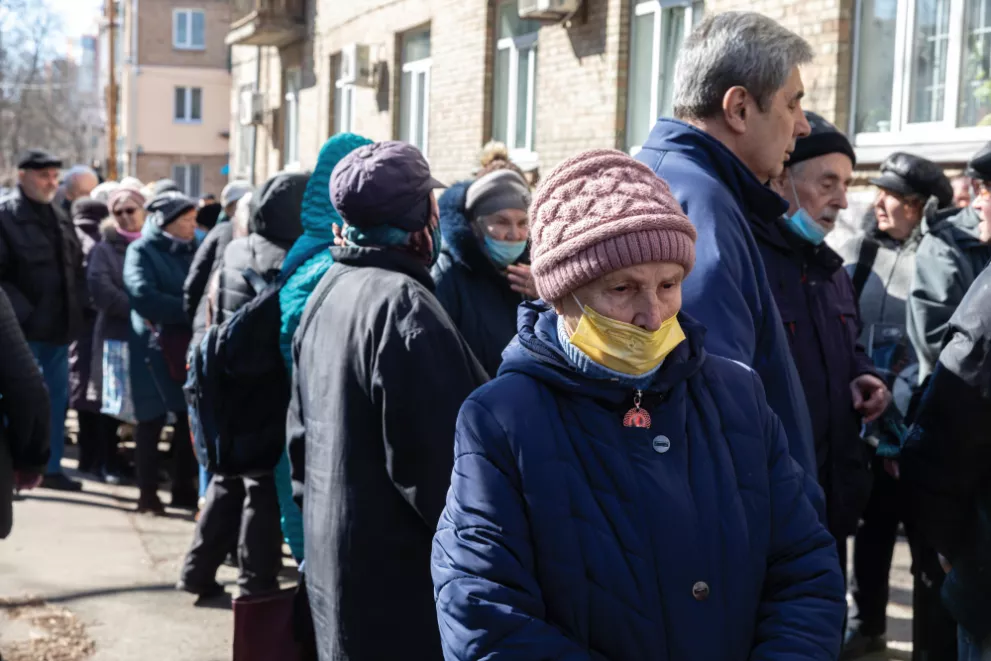
Shoppers queue for grocery essentials in Kyiv, March 2022.
Problem #4: Complicated Internal Logistics
Retailers in Ukraine are facing not only bombed and mined roads, but also a shortage of drivers. For most manufacturers, logistics has traditionally been carried out by hired transport. In the early days of the war, a significant number of carriers stopped operating, for various reasons. Some drivers were mobilised into the armed forces, while others refused to go to work because their routes could go through areas of war.
According to ATB-Market’s Markov, at the beginning of the war, there was a certain “lack of coordination” between military and civilian administrations in the country. Many checkpoints were created, passage systems were introduced, curfews were imposed, etc., but most of these measures were implemented independently at the municipal level, without clear coordination and without taking into account the need to address food supply issues.
“Some carriers refused to put their vehicles on the line, fearing for the safety and integrity of their transport,” Markov says. “Partly, we understand them because, in the early days of the war, Russian military personnel took away cargo transport [and] shot at trucks carrying food and essential goods.”
Therefore, in the first weeks, even in the first month of the war, most of the goods in ATB-Market had to be delivered by passenger car. At the beginning of the war, the network had about 750 trucks and trailers, and the ATB fleet was engaged in delivering goods from manufacturers to their own warehouses, and further to stores.
Fozzy Group also has its own transport fleet. “Currently, we have 316 trucks and 161 semi-trailers, and in 2022, we leased 59 new trucks,” says Tsygankov. “When fuel suddenly ran out in Ukraine, we bought five barrels for transportation and imported fuel from Poland.”
Problem #5: Damaged Warehouses and Logistics Centers
In early March 2022, the co-owner of the GoodWine chain of off-licences, Volodymyr Shapovalov, was at his home in the village of Stoyanka, in the Bucha district of the Kyiv region. As the fighting raged around Kyiv, Shapovalov saw a massive column of smoke and realised that GoodWine’s warehouse – located just a few kilometres away – was on fire.
It housed 1.6 million bottles of wine, including 15,000 collectible bottles, with a total value of €15 million. Of this amount, over €11 million worth of goods belonged to GoodWine, while the remaining €4 million came from various suppliers.
According to Dmytro Krymsky, another co-owner of GoodWine, the company offered to “split the losses” 50/50 with its suppliers and pay off the debt gradually by the end of 2023, however, in practice, many suppliers have cancelled or frozen their debts until Ukraine receives reparations from Russia.
GoodWine’s warehouse was part of the larger West Gate Logistic complex, which covered an area of over 100,000 square metres and belonged to Dragon Capital. According to Dragon Capital CEO Tomáš Fiala, three out of 11 premises in its warehouse property portfolio – totalling 116,000 square metres (or 30%) – were destroyed. The total losses for Dragon Capital’s warehouse property amounted to approximately €70 million.
In addition to Dragon Capital’s warehouses, eight warehouses were burnt down in the Kyiv region.
In the autumn of 2022, Ukraine experienced a complete power outage as a result of Russia’s efforts to destroy the energy infrastructure. Ukrainian retailers had to adapt quickly, and within a few months, they purchased generators and Starlink satellite Internet services for their warehouses, distribution centres, and stores.
“The most difficult thing was the period of blackouts,” says Metro’s Tsvykh. “The lack of Internet significantly slowed down work and affected its quality. To solve this critical problem, Metro’s logistics partners made maximum efforts to maintain a stable work process.”
Elsewhere, two of ATB-Market’s key distribution centres were either completely or partially destroyed in the Kyiv region. These centres served the entire northern part of the country, including the Kyiv and Chernihiv regions, as well as central Ukraine. Additionally, another distribution centre, located in the Kherson region, was captured in the first days of the war. Due to its proximity to the combat zone, the Kharkiv DC could only operate at 20% to 30% of its capacity, which was a significant challenge for the company.
To cope with this, ATB had to switch to the distribution centres that remained, which are now working under an extreme load that is 1.5 times higher than the typical peak load, according to Markov.

ATB-Market, Ukraine's largest retailer, has sought to ensure that local populations have access to key grocery items
Previous Losses
Assessing the losses accrued by Ukrainian supermarket networks is currently very difficult – and the war isn’t over yet.
According to Metro Ukraine, the cost of warehouse logistics has increased by 25% over the past year, while domestic transportation logistics costs have almost doubled, due to higher fuel prices and reduced transport turnover. In the first half of the full-scale Russian aggression, Metro experienced a significant increase in the cost of transporting imported goods, with some routes seeing a two- or three-fold increase.
“The situation has significantly improved on the European front over the past year,” says Tsvykh. “Prices have stabilised, but, compared to pre-war times, the cost of transporting goods has increased by up to 50%, depending on the country.”
Fozzy Group has preliminarily estimated losses at almost €75 million, including losses from a distribution centre, inventory, and those related to the temporary occupation or destruction of parts of supermarkets.
ATB-Market is not currently attempting to estimate losses, stating that it is in the tens of millions of euro and very preliminary – some goods were destroyed in the outsourcers’ warehouses, and there is still no information about the extent of the loss. Elsewhere, some goods were looted in stores in occupied territories, and the retailer has no access to these premises.
“Damage assessment is still ongoing, so the figures will increase significantly,” says Markov, “but this is not the worst part. Dozens of our employees have died or been injured, and that is our greatest loss.”
© 2023 European Supermarket Magazine – your source for the latest retail news. Article by Nina Mishchenko. Click subscribe to sign up to ESM: European Supermarket Magazine.


